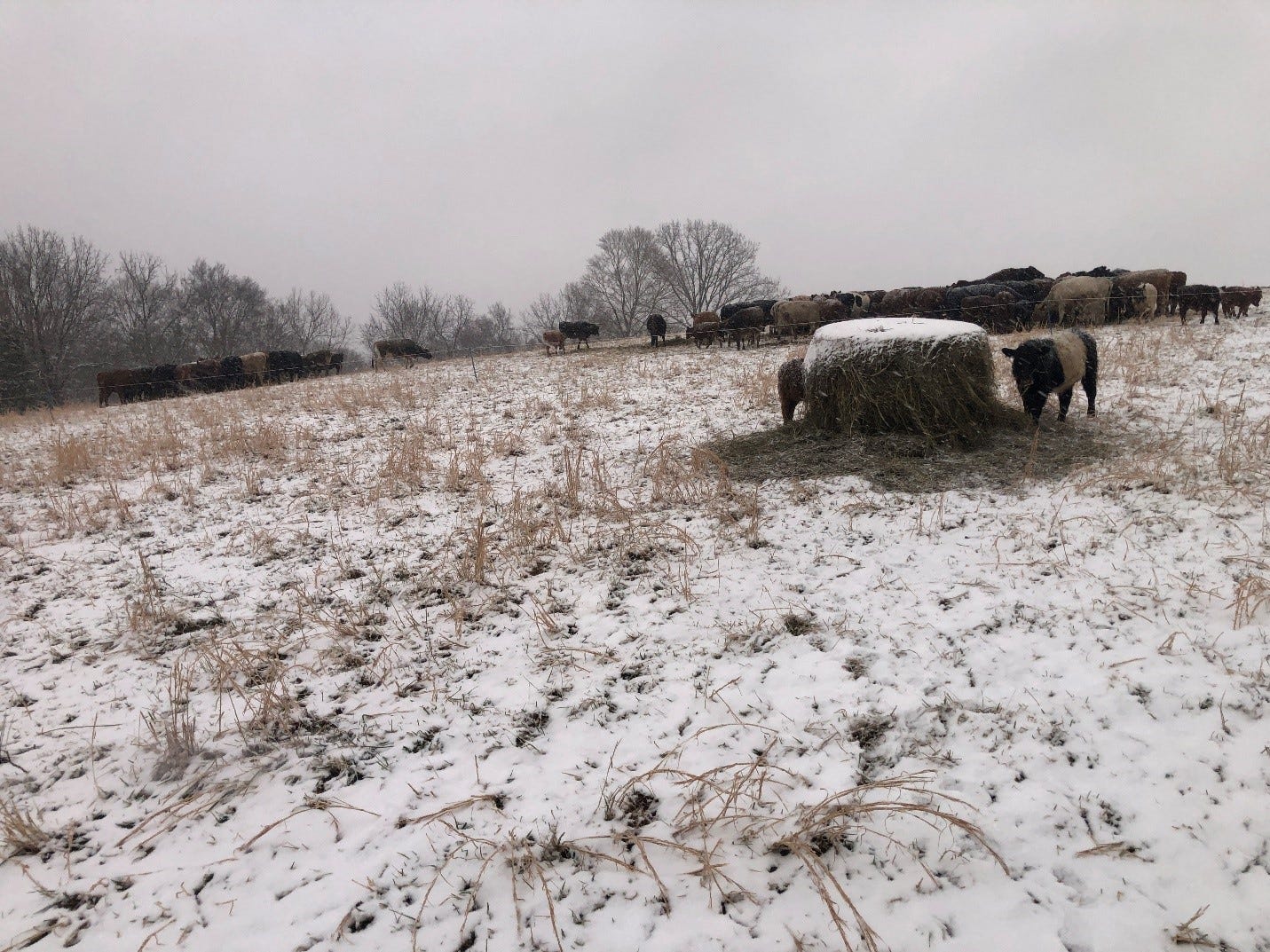UPCOMING CONFERENCES
February 16, Grazing for Profit, Harriman, TN preregistration due the 10th (865) 248-3159. Jim Gerrish, keynote speaker.
February 20-21, Heart of America Grazing Conference, Ferdinand, Indiana, registration www.indianaforage.org
February is the time for frost seeding.
The weather in the fall determines much of the success for stockpiling growth for winter grazing. The upper mid-south didn’t have great weather in the fall, so we see less ground cover and more mud potential this winter. Bare ground increases the potential for compaction and weeds, but we have options to mitigate the impact. We can do nothing and hope for the best, managing what we have, frost seed legumes and brassicas in February, drill grass and legumes in March, or drill a warm season in late April or early May. Which option is best for you will vary depending on how you feed hay and manage grass. If your hay has viable seed in it, the bare areas may reseed from the hay but remember that hay with mature seed is sometimes low quality.
If you are seeding hay feeding areas before seeding legumes, be sure the hay you fed wasn’t harvested from a field treated with a long-lasting herbicide that will carry over into the soil and kill broadleafs. Legume mixes typically seeded in February include 2 pounds of ladino white clover, 4 pounds certified red clover, and 8 pounds annual lespedeza on thinner lower fertility soils. If these legumes are too steep this year, feel free to lower the rates. I typically add five or more pounds of orchard grass or tall fescue to the legume seed mix, and you can also add 1-2 pounds of brassicas. The timing is best when the soil is frost heaved and when the temperature is 28 degrees or lower.
March Seeding
Perennial grass is best seeded in the fall, but if you need cover now and you’re drilling grass and legumes in March, you could seed spring oats, which have the most mycorrhizal connections of the small grain species with legumes. The downfall of seeding in spring is the short growing season, but sometimes, when the weather cooperates, spring-seeded perennials do ok. They will have more weed competition, so remember to graze or clip as needed to keep light to the new tender seedlings.
April and May Seeding
Wait until late April or early May and seed a warm season like crabgrass. This is a good option because it extends the growing season and sets you up nicely to seed tall fescue or orchardgrass in September. May is the time to seed bermudagrass, which is a good option if you feed in the same area yearly, but remember that bermudagrass prefers lower grazing between 3 and 6” and sometimes doesn’t do well where tall grazing is practiced.
I’ll be at both conferences; I hope to see you there.
Greg
Synergistic Grazing Consultant
